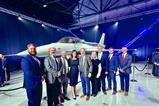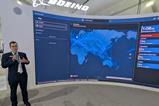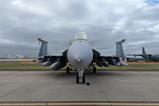Southeast Asian air forces are gradually recapitalising their tactical transport capabilities, amid a growing requirement to move personnel and equipment across broad geographies.
The early 2020s have been pivotal for the future of tactical airlift among Southeast Asian countries, with air forces that have long relied on ageing Lockheed Martin C-130s taking steps to obtain new equipment.
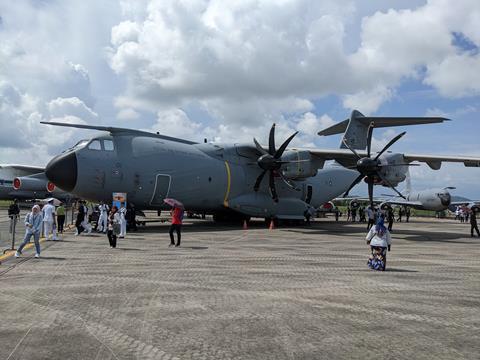
The requirement for new tactical transports is real. Cirium fleets data indicates that Southeast Asian air forces have over 90 aircraft serving in the fixed-wing, utility transport mission. The average age of this fleet is 30.1 years.
Legacy C-130s dominate the region’s tactical transport space, with 60 examples in service. The average age of this fleet is 41.7 years.
The region’s two oldest C-130s are operated by the country considered to have Southeast Asia’s most modern air force: Singapore. The Republic of Singapore Air Force has one KC-130B that is 64.4 years old and a slightly younger sibling at 63.7 years.
The second most prominent transport in the region is the Airbus Defence & Space C295. The region’s air forces operate 21 examples, with an average age of 7.5 years.
Indonesia was among the first regional air forces to place major commitments for new transports.
In September 2021 the long-time C-130 operator ordered five new C-130Js during a visit by officials to the USA. Four examples have been delivered.
Shortly after the C-130J commitment, Jakarta disclosed a long-awaited order for two Airbus Defence & Space A400Ms, a transaction that was finalised in December 2022. The aircraft will be delivered from 2026.
"Menyambut Super Hercules Baru: Pesawat C-130J A-1344 akan Tiba Memperkuat TNI AU"
— TNI Angkatan Udara (@_TNIAU) January 15, 2024
Pangkalan TNI AU Halim Perdanakusuma bersiap menyambut kedatangan satu unit Pesawat C-130J Super Hercules dengan tail number A-1344 pada 22 Januari 2024. Kehadiran pesawat ini menjadi penguatan… pic.twitter.com/d7wHyQDI3M
In addition to the new C-130Js, Indonesia operates a trio of C-130Bs with an average age of 63.1 years, with these aircraft set to be retired. It also has 11 C-130Hs, some of which formerly served with the Royal Australian Air Force, and a single KC-130B tanker.
Local MRO firm GMF AeroAsia is conducting a major modernisation programme for eight of the C-130Hs, which includes replacing the centre wingbox and other improvements. The work adds 20 years to the C-130H’s service life.
Indonesia also operates nine C295s, two of which were produced locally by Indonesian Aerospace, also known as PTDI. Moreover, Jakarta has expressed interest in the A330 Multi-Role Tanker Transport (MRTT).
In October 2023, the Philippines also moved to update its transport capabilities, with Manila greenlighting the acquisition of three new C-130Js. Deliveries will run from July 2026.
The new aircraft will significantly boost Manila’s lift capability. They join four elderly C-130s, the oldest of which is a B-model example that is 62.3 years old. The Philippine air force also operates six C295s.
Another big regional C-130 operator is Thailand, operating 12 C-130Hs with an average age of 36 years. The Royal Thai Air Force appears content to stick with the platform, with its fleet having undergone a modernisation programme locally with Thai Aviation Industries.
The Thai upgrades involve cockpit displays and other systems such as a traffic alert and collision avoidance system and ADS-B. The aircraft have also received structural improvements.
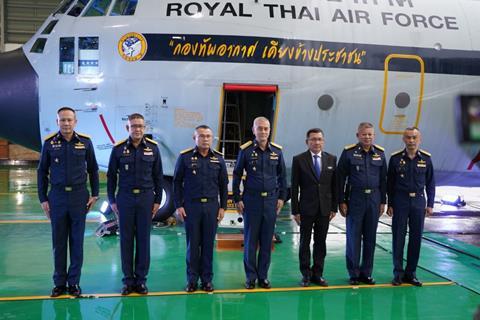
Malaysia’s exact plans for its 12 C-130s – 10 C-130Hs and two KC-130Hs – are not clear, although it is understood that the fleet will operate well into the 2030s. The average age of the fleet is 38.3 years, which suggests that these aircraft will remain viable with upgrades. Moreover, local MRO firm Airod has extensive experience with Malaysia’s C-130 fleet and is all but certain to participate in any upgrade programme.
Malaysia also moved early to bolster its airlift fleet, with four A400Ms delivered between 2015 and 2017. The large four-engined type is well suited to rapidly moving personnel and equipment across the South China Sea, which divides peninsular Malaysia from the country’s Sabah and Sarawak provinces on the island of Borneo.
Arguably the most intriguing opportunity for acquiring a new airlifter is Singapore, with four KC-30Bs, one KC-30H, and five C-130Hs. The average age of the 10-aircraft fleet is 50.7 years. While old, Singapore’s C-130s have been extensively updated with glass cockpits and new avionics.
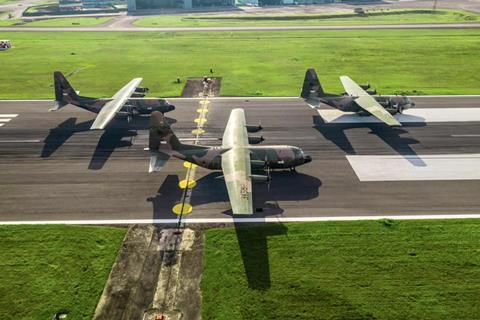
This force is backed up by six A330 MRTTs, which can carry passengers and cargo in addition to their tanking duties.
In 2022, chief of air force Major-General Kelvin Khong had this to say about Singapore’s C-130s: “The C-130 transport aircraft is a valuable workhorse and we will continue to operate it for as long as it is operationally and economically feasible, whilst continuing to keep a look out for new capabilities that can better meet our future needs.”
A clear path forward for Singapore is the C-130J, although the US government has not published a Foreign Military Sales case for Singapore regarding this platform. The C-130J would appeal to air force personnel who have long experience with the legacy C-130 and be in-line with neighbours and the city state’s major defence partner, the USA.
Another possibility for Singapore is the Embraer C-390, which is coming to the Singapore air show. The type has traction in Asia: late 2023 saw the twin-jet type emerge as the surprise winner of South Korea’s Large Transport Aircraft II acquisition for three aircraft. This marked the type’s first sale in Asia and was an important victory over the C-130J in a country that has long operated C-130s.
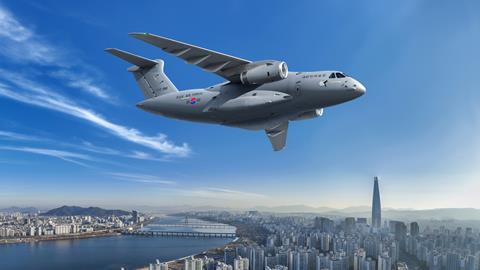
The type’s payload and speed could be of utility to Singapore’s military given that it frequently trains in far-flung locations such as Australia, New Zealand, and the USA.
The last decade has seen significant progress in Southeast Asia’s tactical airlift front. As legacy C-130s continue to age, manufacturers such as Airbus, Embraer, and Lockheed will compete hard for emerging fleet replacement and growth opportunities.























